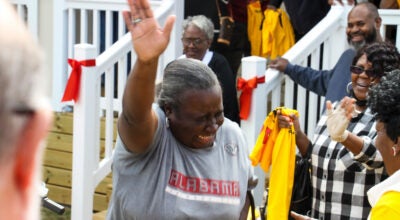Shelter construction begins
Published 4:20 am Sunday, August 3, 2008
Safe-T-Shelter touts a slogan in bold, red letters on its Web site: “When your life depends on it!”
A tragic natural disaster could happen now, later or never. Residents in Orrville and Burnsville will have some added protection in the event the “big one” does strike.
Representatives from Safe-T-Shelter, a Danville company that builds storm shelters, began marking the layouts for community shelters at sites in both Dallas County communities Friday.
The 10-feet by 48-feet, above-ground structures will each protect almost 100 people whose only other options might be mobile homes or community shelters that are not FEMA approved.
“We’ll just get a good idea of where we’re going with it, and of course, we’ll be back to do the digging of the foundation, pouring the concrete and a week to two weeks later, we’ll actually set that unit,” said Safe-T-Shelter vice president Brent Mitchell. “We have to look at things like water drainage … but we’ll have to look and see what kind of grade we’ve got.”
The structures are to sit on concrete footers 12 feet wide by 50 feet long with seating on both sides and in the middle. They have bathrooms and power ventilators that provide 15 cubic feet of fresh air per person per minute, meeting FEMA construction requirements.
The shelters are anchored by foot-deep concrete in the middle of the foundation and constructed with quarter-inch steel, which Mitchell said has never been breached. They are designed to withstand direct strikes from debris and 350 mph winds.
Dallas County EMA and Homeland Security Director Pam Cook said the county needs more shelters. Bu they can only get them as grants become available.
“Each district gets a turn to do some type of community improvements,” Cook said. “The next opportunities that become available — if they want to get sirens, shelters whatever it is — then they give me that guidance.”
After the concrete sets for a week, Safe-T-Shelter can place the pre-constructed shelters on the concrete and complete any additional construction.
That includes bathrooms, ventilation and berms that run at a 45-degree angle from the middle of the side walls to the ground. The berms deflect debris, adding extra protection from strikes. Normally, the heads of people seated inside are below the berm level.
“It acts as an insulator instead of having that flat side,” Mitchell said.





